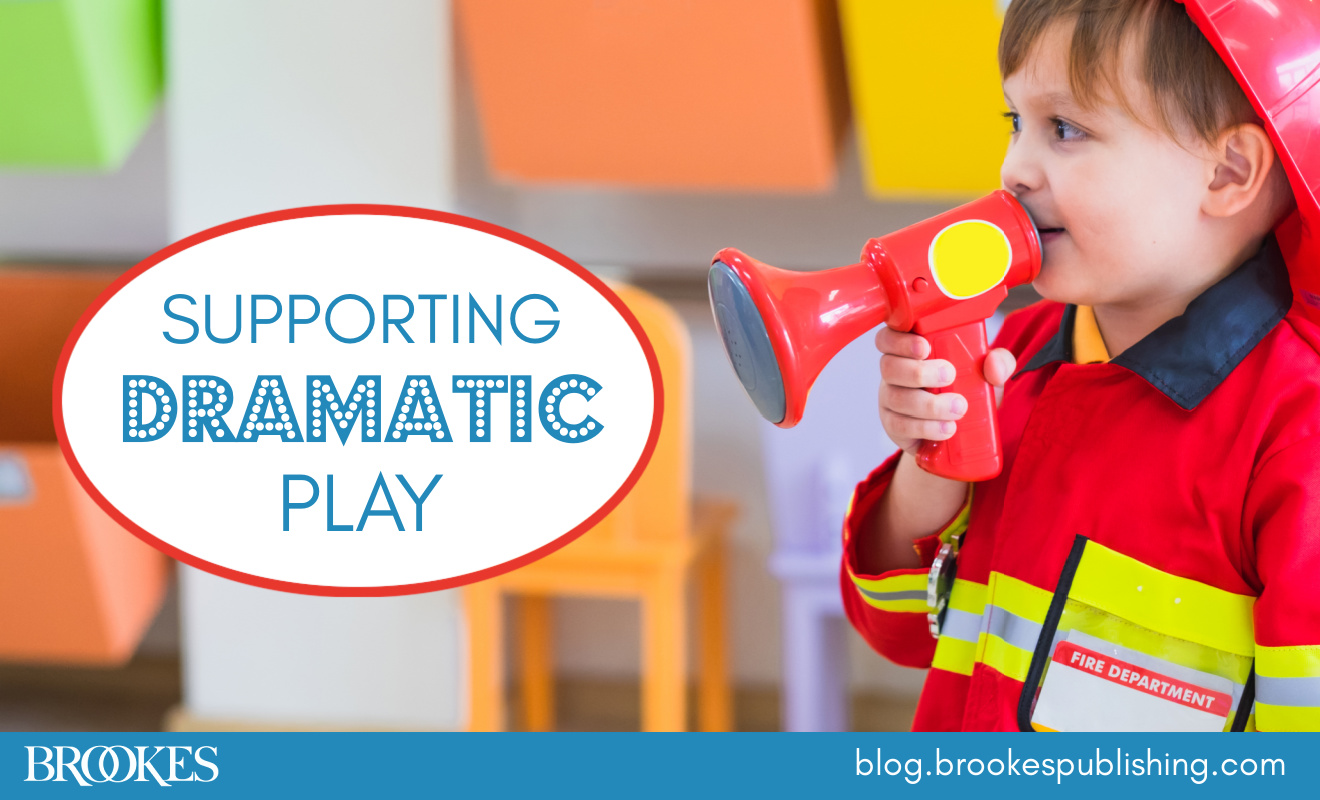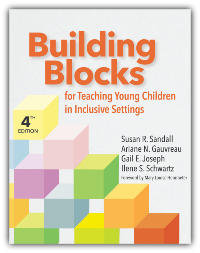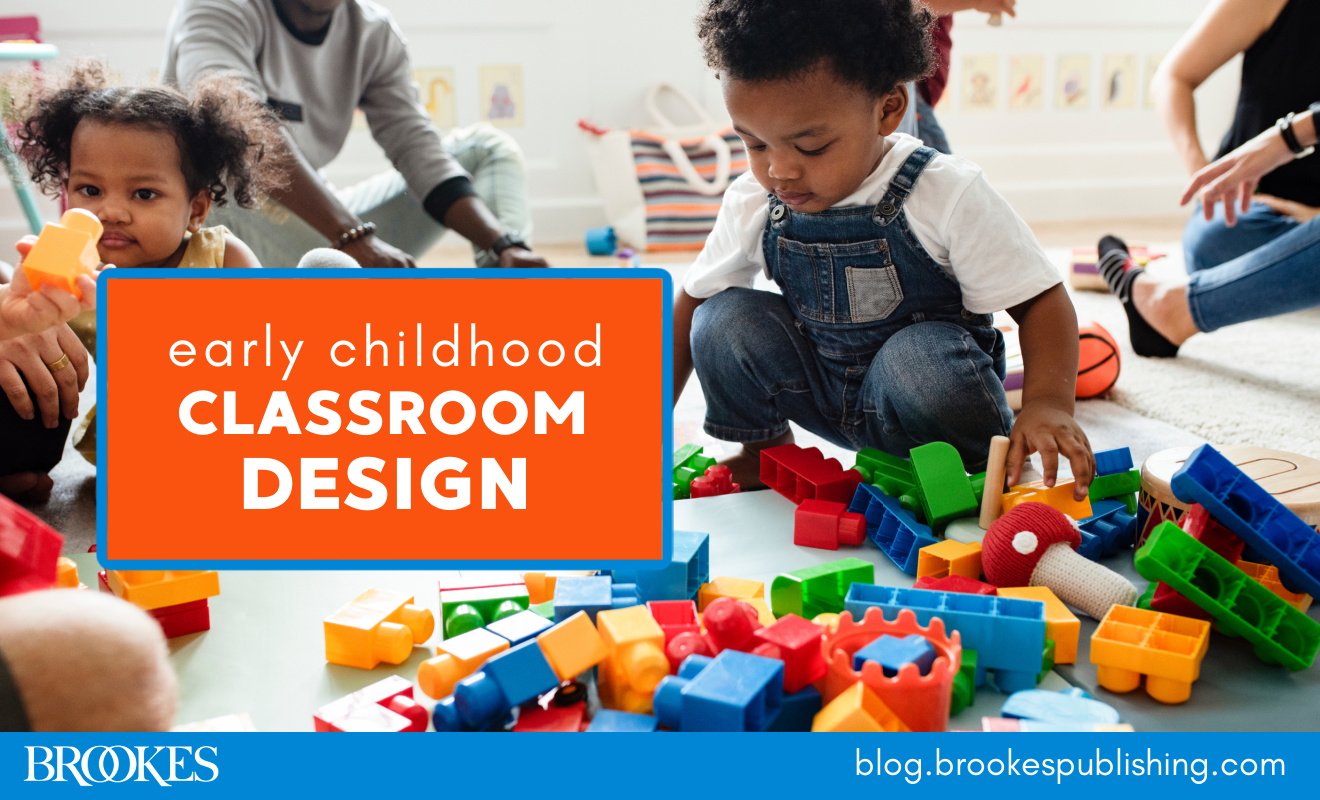14 Inclusive Ideas for Supporting Dramatic Play
May 15, 2025
 In early childhood classrooms, dramatic play is a powerful way to promote every child’s social, communication, and problem-solving skills. Excerpted and adapted from the new edition of Building Blocks for Teaching Young Children in Inclusive Settings, today’s post brings you 14 specific, inclusive ideas for promoting participation, engagement, and learning during dramatic play.
In early childhood classrooms, dramatic play is a powerful way to promote every child’s social, communication, and problem-solving skills. Excerpted and adapted from the new edition of Building Blocks for Teaching Young Children in Inclusive Settings, today’s post brings you 14 specific, inclusive ideas for promoting participation, engagement, and learning during dramatic play.
Provide environmental supports
- If a child becomes overstimulated and does not engage in play, limit the number of items in the dramatic play area to only a few things you know the child can be successful with. You can always add more later.
- If a child does not engage in sociodramatic play, provide the child with a playscript. A playscript can be developed using either photos or drawings. The idea is to script a two- or three-part play sequence the child can follow. For example, 1) get a pot, 2) put food in pot, and 3) stir pot.
- If a child perseverates on one play sequence or is disruptive in the dramatic play area, use items from the dramatic play area during circle time and small-group time to teach new ways to play. This can provide direction and structure for children and expand a child’s play skill repertoire.
Adapt materials
- If a child uses a walker or wheelchair, make sure there is enough space in the classroom for the child to maneuver. Try it out yourself. You may also need two tables in the area so they are at varied heights.
- If a child has difficulty gripping or handling tools, provide materials adapted to their needs. Stock the house area with easy-to-grip spoons, forks, and handles. Build up handles with foam or tape. Full-size, heavier utensils may be easier to hold than child-size utensils.
- If a child has difficulty fastening clothes, make sure the dress-up clothes are easy to put on and take off. Adapt with Velcro. Include items that are simpler to use, such as hats, sunglasses, or purses.
Consider child preferences
- If a child does not play or remain engaged long at the dramatic play area, develop a prop box that reflects the child’s interests. For example, if a child loves stuffed animals, create a pet station in dramatic play that includes animals, pretend food, vet supplies, and so on.
- Integrate favorite toys, colors, activities, or people. For example, if the child likes yellow, place yellow dress-up clothes, dishes, and other props in the dramatic play area.
Try adult support
- If a child is learning language skills, look for opportunities to engage in or expand conversation. For example, if a child is playing with a tea set and they pretend to pour tea into a cup and drink it, bring a doll to the table. Pretend the doll is your guest, serve tea to the doll, and begin a conversation with the doll.
- If a child wanders in and out of the dramatic play area but never gets beyond trying one thing, join the child. Watch to see what the child looks at or does. Do the same thing, no matter how simple. Then, gradually take turns and expand on the child’s play. For example, if the child looks in the mirror, you look in the mirror and say something.
- If a child has a difficult time engaging with peers in the dramatic play area, try this before the child moves to dramatic play: Ask them to point to or tell you three things they can play with a peer in the dramatic play area, and ask which they will try first.
Make the most of peer support
- If children are washing baby dolls in the dramatic play area and a child is having trouble removing the small clothes from the doll, ask another child to help them with the task.
- If a child likes to go to the dramatic play area but often seems to get stuck after dressing a doll with clothes and shoes, invite children with more advanced play skills into the area. They can show the child what else the doll can wear (e.g., a hat, a purse) and what else the child can do with the doll (e.g., talk to the doll, brush their teeth, walk the doll in a stroller, feed the doll food).
- If a child does not often choose the dramatic play area, pair the child with a peer who likes this area. Ask the peer to take the child to the dramatic play area so they can play together.
Use these tips to enhance dramatic play in your inclusive early childhood classroom! And for much more on creating an authentically inclusive learning environment for young children, add the book to your program’s professional toolbox.




Write a Comment
Your email address will not be published. Required fields are marked *
Post a Comment